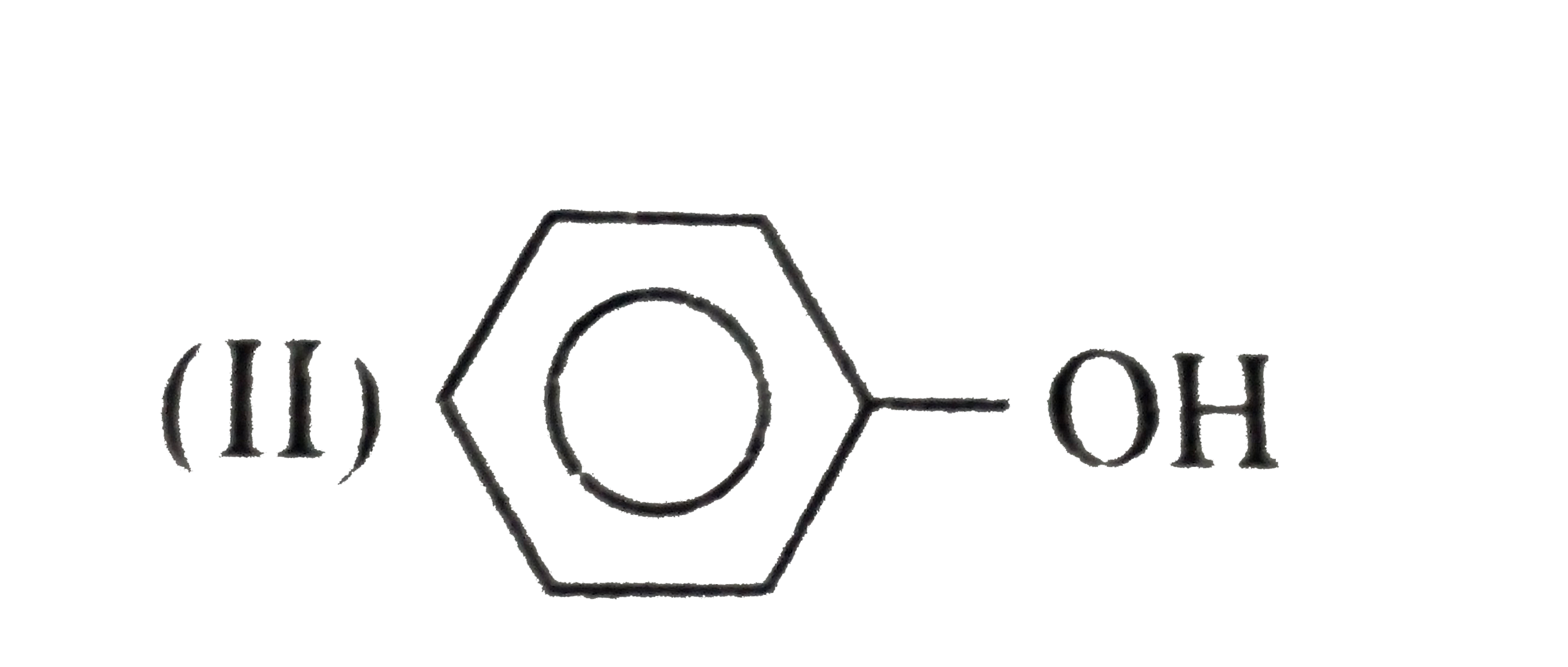The decreasing order of−I effect of the following is :
(I) CHO
(II) F
(III) OR
(IV) NH2
(V) OH
(VI) Ph.
I>II>III>IV>V>VI
II>I>III>IV>V>VI
I>II>V>III>IV>VI
II>I>V>III>IV>VI
To determine the decreasing order of the -I (negative inductive) effect of the given groups, we need to analyze the electron-withdrawing ability of each group. The -I effect indicates the ability of a substituent to withdraw electron density from the rest of the molecule.
1. Identify the Groups: The groups provided are:
- (I) CHO (Aldehyde)
- (II) F (Fluorine)
- (III) OR (Alkoxy group)
- (IV) NH2 (Amino group)
- (V) OH (Hydroxyl group)
- (VI) Ph (Phenyl group)
2. Understand the -I Effect: The -I effect is primarily exhibited by electronegative atoms or groups that can withdraw electron density through the sigma bond. The order of -I effect generally follows the electronegativity of the substituents.
3. Rank the Groups Based on Electronegativity:
- Fluorine (F) is the most electronegative element and has a strong -I effect.
- The carbonyl group (CHO) also has a significant -I effect due to the electronegative oxygen atom.
- Hydroxyl group (OH) has a moderate -I effect due to the electronegative oxygen.
- Alkoxy group (OR) has a weaker -I effect compared to OH because the alkyl group donates electron density.
- Amino group (NH2) has a weak -I effect as it can donate electron density through resonance.
- Phenyl group (Ph) has the least -I effect since it can donate electron density through resonance.
4. Establish the Order: Based on the above analysis, we can establish the following order of -I effect:
- CHO > F > OH > OR > NH2 > Ph
5. Final Answer: The decreasing order of -I effect is:
- CHO > F > OH > OR > NH2 > Ph
- (I) CHO (Aldehyde)
- (II) F (Fluorine)
- (III) OR (Alkoxy group)
- (IV) NH2 (Amino group)
- (V) OH (Hydroxyl group)
- (VI) Ph (Phenyl group)
- Fluorine (F) is the most electronegative element and has a strong -I effect.
- The carbonyl group (CHO) also has a significant -I effect due to the electronegative oxygen atom.
- Hydroxyl group (OH) has a moderate -I effect due to the electronegative oxygen.
- Alkoxy group (OR) has a weaker -I effect compared to OH because the alkyl group donates electron density.
- Amino group (NH2) has a weak -I effect as it can donate electron density through resonance.
- Phenyl group (Ph) has the least -I effect since it can donate electron density through resonance.
- CHO > F > OH > OR > NH2 > Ph
- CHO > F > OH > OR > NH2 > Ph
Topper's Solved these Questions
- GENERAL ORGANIC CHEMISTRYBOOK - CENGAGE CHEMISTRY ENGLISHCHAPTER - GENERAL ORGANIC CHEMISTRYEXERCISE - Assertion-Reasoning
5 Videos
- GENERAL ORGANIC CHEMISTRYBOOK - CENGAGE CHEMISTRY ENGLISHCHAPTER - GENERAL ORGANIC CHEMISTRYEXERCISE - Archives
12 Videos
- GENERAL ORGANIC CHEMISTRYBOOK - CENGAGE CHEMISTRY ENGLISHCHAPTER - GENERAL ORGANIC CHEMISTRYEXERCISE - Multiple Correct
22 Videos
- CLASSIFICATION AND NOMENCLATURE OF ORGANIC COMPOUNDSBOOK - CENGAGE CHEMISTRY ENGLISHCHAPTER - CLASSIFICATION AND NOMENCLATURE OF ORGANIC COMPOUNDSEXERCISE - Analytical and Descriptive Type
3 Videos
- HYDROGEN, WATER AND HYDROGEN PEROXIDEBOOK - CENGAGE CHEMISTRY ENGLISHCHAPTER - HYDROGEN, WATER AND HYDROGEN PEROXIDEEXERCISE - Subjective Archive (Subjective)
3 Videos
Similar Questions
The decreasing order of −I effect of the following is :
(I) R3N⊕
(II) NO2
(III) CN
(IV) SO3H
(V) COOH.
View SolutionThe decreasing order of +I effect of the following is :
(I) −OӨ
(II) Me−
(III) Et−
(IV) Me2CH−
(V) Me3C−.
View SolutionThe decreasing order of −I effect of the orbitals is :
(I) sp
(II) sp2
(III) sp3.
View SolutionThe decreasing order of acidic character of the following is:
(I) (II)
(II) 
(III) (IV)
(IV) 
View SolutionThe decreasing order of acidic character of the following is :
(I) CH3SH
(II) CH3OH
(III) H2O
(IV) EtOH.
View SolutionThe decreasing order of ease of hydrolysis of the following esters is :
(I) MeCOOPh
(II)
(III)
(IV) .
.
View SolutionThe decreasing order of boiling points of the following is :
(I) RCOCl
(II) (RCO)2O
(III) RCONH2
(IV) RCOOH.
View SolutionThe decreasing order of the basic character of the following is :
(I) FӨ
(II) NOӨ3
(III) H2O
(IV) CH3OH.
View SolutionThe decreasing order of -I effect of the following is
I. −⊕NH3.
II. −NO2
III. −CN
IV. −COOH
View SolutionThe decreasing order of nucleophilicities of the following is :
(I) BrӨ
(II) MeOӨ
(III) Me2NӨ
(IV) Me3CӨ.
View Solution
